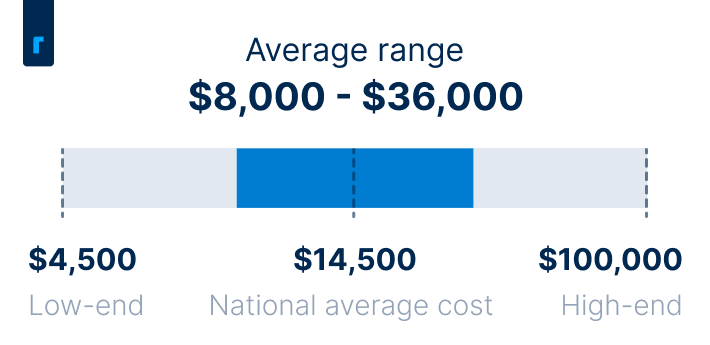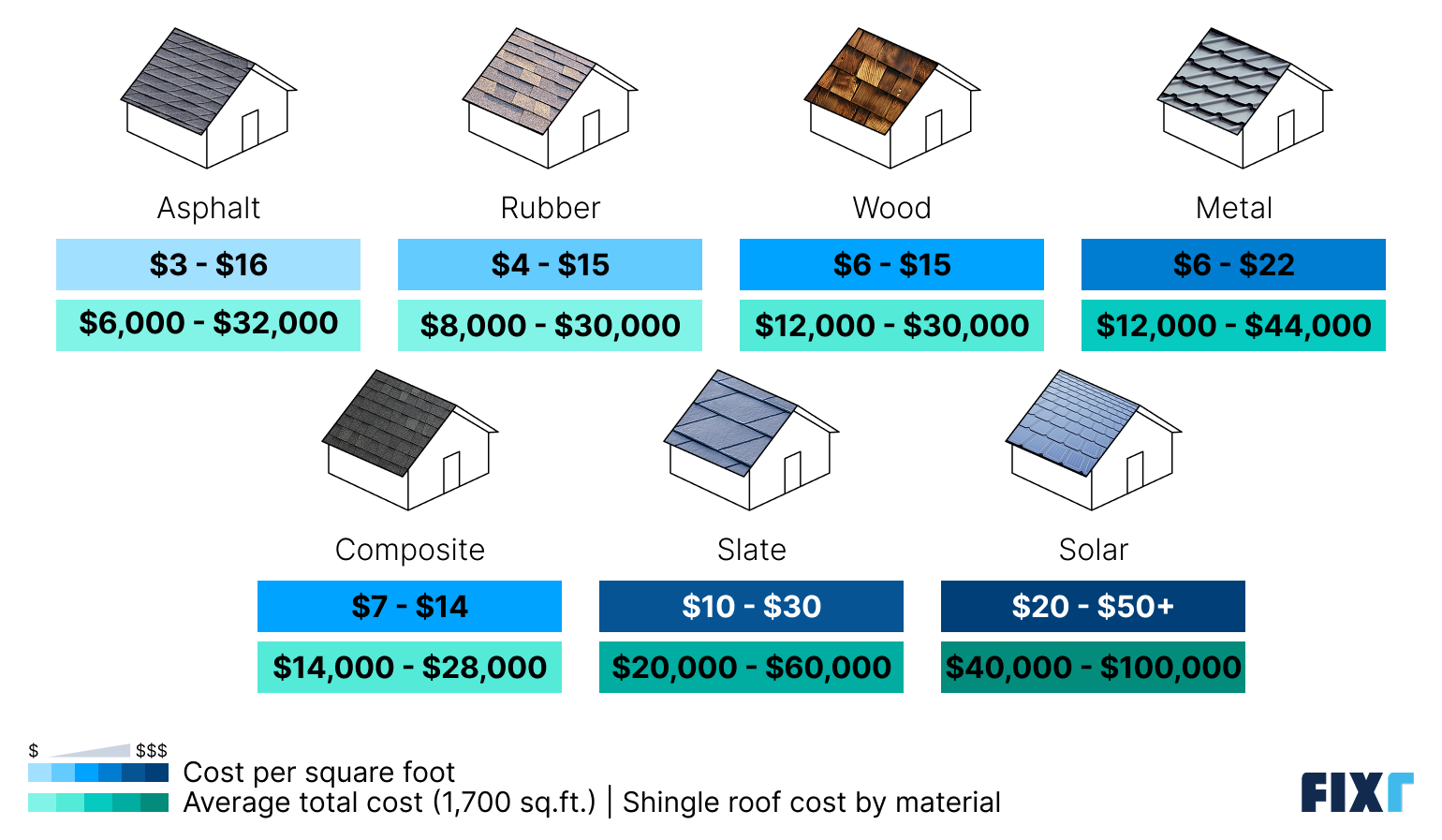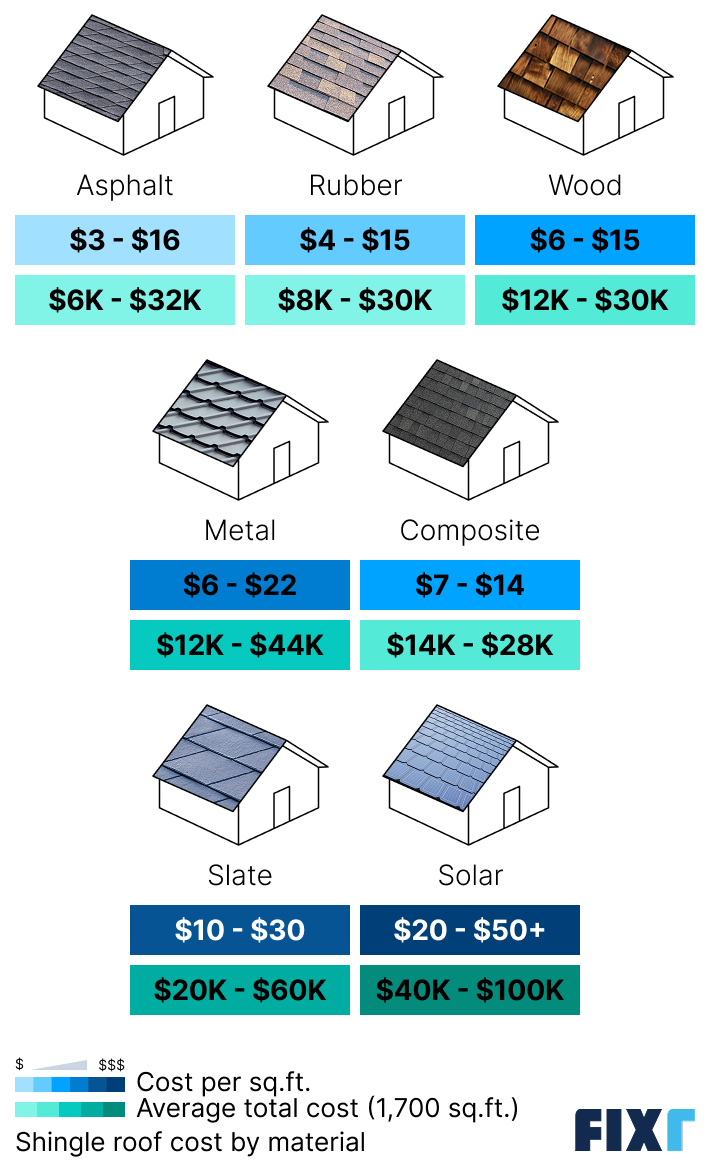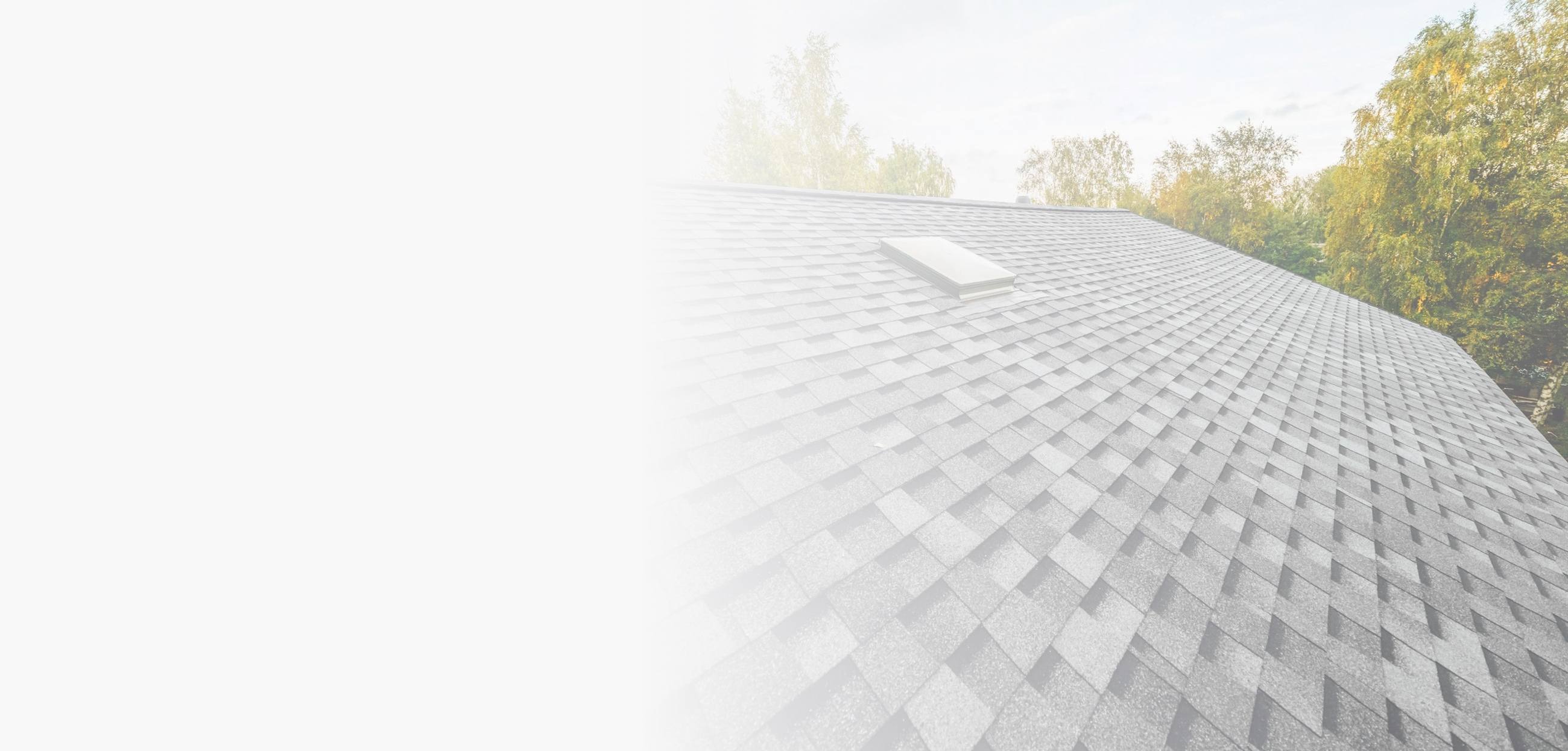Updated: September 19, 2025
Written by Dan Simms
Laura Madrigal is the Home Design Specialist at Fixr.com, dedicated to identifying and analyzing significant changes within residential design. She is the author of leading trends reports on interior design, kitchen, and bathroom, and her insights have been featured in publications like Realtor and the New York Post.
Learn moreReviewed by Laura Madrigal
Your roof is one of the most crucial parts of your home, as it protects your home from the elements and plays an important role in energy efficiency. Understanding roof shingle prices and installation costs can help you plan out this major home improvement avoid surprises, and ensure you get a high-quality product and installation that will last for decades to come.
Since 2022, shingle roof replacement costs are up 50% due to inflation and material shortages. Budget-friendly asphalt shingles, which have always been the most popular material, are in even higher demand now. The average cost to shingle a roof is $14,500, and most homeowners pay somewhere between $8,000 and $36,000. Costs can vary widely depending on home size, the shingle material, roof complexity, and more.
Shingle Roof Replacement Cost


Shingle Roof Cost by Size
Shingle roof costs per square foot average $4 to $18, or $400 to $1,800 per square (100 square feet), which is how many manufacturers and installers price out roofing.
Keep in mind that roof size is based on pitch and shape, not interior square footage, so your roof will almost always cover significantly more area than your home’s footprint. Your type of roof design, slope, and overhangs will all affect your roof square footage, independent of your living space, but we’ll include average costs based on home square footage below, as interior living space is much easier to measure than roof slopes.
House Size | Roof Size | Cost Range |
1,000 sq.ft. | 1,200 sq.ft. | $4,800 – $21,600 |
1,500 sq.ft. | 1,800 sq.ft. | $7,200 – $32,400 |
1,700 sq.ft. | 2,000 sq.ft. | $8,000 – $36,000 |
2,000 sq.ft. | 2,400 sq.ft. | $9,600 – $43,200 |
2,500 sq.ft. | 3,000 sq.ft. | $12,000 – $54,000 |
3,000 sq.ft. | 3,600 sq.ft. | $14,400 – $64,800 |
Shingle Roof Cost by Type
The shingle material you choose to install can swing your total price up or down by tens of thousands of dollars in some cases. Asphalt shingles are, by far, the most common and are also the most affordable, so prices go up from there for other materials.


Shingle Material | Cost (per Sq. Ft.) | Average Total Cost* |
$3 – $16 | $6,000 – $32,000 | |
Rubber | $4 – $15 | $8,000 – $30,000 |
$6 – $15 | $12,000 – $30,000 | |
Metal | $6 – $22 | $12,000 – $44,000 |
Composite | $7 – $14 | $14,000 – $28,000 |
Slate | $10 – $30 | $20,000 – $60,000 |
$20 – $50+ | $40,000 – $100,000 |
*Note: The average total cost in the table above assumes an average 1,700-square-foot home with a 2,000-square-foot roof.
Asphalt Shingles
Asphalt shingles are the most affordable and the most popular, costing about $3 to $16 per square foot. They offer excellent value for the money and perform well in most climates.
3-tab shingles – Most affordable, but with the shortest lifespan and least protection.
Architectural shingles – Longer-lasting, more durable, and can withstand impacts better.
Luxury shingles – Highest curb appeal and premium quality, but also the most expensive.
Rubber Shingles
Rubber shingles cost around $4 to $15 per square foot. They’re an eco-friendly and affordable option, often made from recycled materials. Lightweight, durable, and easy to install, they provide a practical choice, though they don’t offer the same high-end aesthetic appeal as slate or wood.
Wood Shakes
Cedar shingles cost around $6 to $15 per square foot. They offer natural beauty and a traditional look, but they pose a major fire risk and aren’t ideal in areas where wildfires are a concern. They have some natural resistance to insects and rot, but they’re not the best option if your climate includes heavy rainfall or high humidity.
Metal Shingles
Metal shingles typically cost $6 to $22 per square foot. They are lightweight, long-lasting, and energy-efficient, with options that can replicate the look of slate or tile. They’re the most resistant to water intrusion, and they can shed snow rapidly and reflect solar heat, making them solid options in extreme climates on both ends of the spectrum.
Composite Shingles
Composite shingles are priced at about $7 to $14 per square foot. They mimic wood or slate at a fraction of the cost, delivering good curb appeal and value. They’re also very durable and require minimal maintenance, although the use of plastic during manufacturing makes them a less sustainable option than natural materials, like metal.
Slate Shingles
Slate roofing ranges from $10 to $30 per square foot. It offers unmatched elegance and longevity, with natural and synthetic options to fit different budgets. Slate is a heavy material that may require structural reinforcement prior to installation to ensure your home can support the added material weight.
Solar Shingles
Solar shingles are the priciest option, costing $20 to $50+ per square foot. They generate clean energy while blending seamlessly into your roof, lowering utility costs without sacrificing curb appeal. They’re relatively expensive, but they can pay for themselves over time by reducing your electric bills.
A new roof is an expensive investment, but it’s important to consider more than just the upfront price. While durability and lifespan are key, you also need to understand typical costs. Choosing a higher-quality material may cost more initially but can save you money on repairs and replacements over time. See our roof replacement cost guide for more details.
Labor Cost to Install Roof Shingles
On average, labor will account for an average of 60% of your total roof replacement costs. However, labor costs come with a massive range based on the cost of the material you’re installing, how heavy the material is, how challenging the shingles are to move into place, the slope and complexity of your roof, your old roofing material, and more.
Labor costs usually include tearing off and hauling away your old roof, laying down new underlayment, and installing the new roof. Your labor costs will increase if you need repairs to your roof deck or new flashing installed. They can also go up if you have a particularly steep roof that requires additional safety precautions that make the job take longer, or if your existing roofing material is on the heavy side and makes removal more challenging.
Cost Factors for a Shingle Roof Installation
There are a few additional cost factors you should consider in addition to materials and base labor charges to get an accurate roof shingle installation estimate. The following factors can all play important roles in your total.
Roof pitch: The pitch of your roof affects your costs in two ways. First, steeper roofs have larger surface areas above a given interior square footage. Second, steep slopes can be more dangerous to work on, so your labor costs can increase if your professionals need to make use of special safety equipment that makes the job take longer.
Roof style and complexity: The style and complexity of your roof, for example, a hip roof with four faces versus a simple gable roof with two, will also impact material and labor needs. A more complex design with multiple valleys and ridges takes longer to install, raising labor costs and requiring additional materials like ridge and valley flashing.
Old roofing material: Most roofers will include the cost of removing your old roof in their estimates, but that line item will be higher if the existing material is particularly heavy, like clay or concrete tiles or slate.
Unexpected damage: There’s always a chance that your roofer finds damage when they rip off your existing roof material. If that’s the case, you could pay anywhere from $150 to $1,000 for roof deck repairs to remove water damage and mold growth.
Permits: Most cities require permits for roof replacement. Your roofer will handle this, but the fee will be included in your total project cost. Re-roofing permits typically range from $150 to $600, depending on your local building department.
Location: The cost to replace roof shingles depends on where you live for a few key reasons. Labor costs differ with the local cost of living, so high-cost cities typically have higher labor fees. Material prices, especially for natural options like slate or cedar, can also vary depending on local sourcing. Additionally, your region’s climate affects which roofing materials are practical and durable for the weather conditions there.
Material brand and warranty: Most roof materials are available from different manufacturers, and the overall quality of the brand and the manufacturer’s warranty included with the product can scale with the cost.
Local restrictions: Building codes and restrictions in your area may influence your material choices. For example, regions prone to wildfires or other natural disasters may require you to install more durable and expensive materials.
Roof Shingle Repair vs. Replacement Cost
Before you lay out the money for roof shingle replacement, it’s a good idea to make sure you need a replacement and that a roof repair wouldn’t be a better financial decision. A total roof replacement is probably best if any of the following is true:
Your roof is close to its expected lifespan
You’ve been experiencing major roof leaks
You’ve had ongoing problems with your roof that demand frequent repairs
Your roof is old or discolored and is detracting from your home’s curb appeal
Your roof sustained sudden major damage as a result of a natural disaster
A roof repair might be a better option if your roof is nowhere near its expected lifespan, if it still provides good curb appeal, and if you haven’t had any issues with leaks, cracked or missing shingles, or major damage from a storm or fallen tree. When in doubt, speak with a local roofer to see if a repair or a replacement is a better value for your home.
Roof repairs cost between $400 and $2,000, on average, while replacing roof shingles costs an average of $14,500. Repairs will almost always be more affordable upfront, but long-term costs could end up being higher if you just keep running into problems that need repairs or if hidden damage from leaks ends up leading to wood rot and mold growth that costs more to repair down the road.
Do New Shingles Increase Home Value?
Yes, new roof shingles will increase your home value, not only because they give buyers more confidence that they’re buying a home that’s properly protected from the elements but also because they boost your home’s curb appeal, which has a direct impact on perceived value.
On average, you can expect an ROI of between 60% and 70% if you go with asphalt shingles, which means a new roof will add an average of between $8,700 and $10,150 to your property value. That number could be much higher if you choose a longer-lasting, more appealing material, like copper or slate, but keep in mind that the total installation costs will also be higher.
DIY vs. Hiring a Pro
With labor costs for roof shingle installation averaging just under $9,000, a DIY roof replacement might seem like a great option to save. Unfortunately, it’s not a good idea to replace your own roof.
Not only is it dangerous to work on a roof, but it’s easy to make mistakes during the installation. Unlike simpler interior projects, errors during roof replacement can lead to major water damage, lower home energy efficiency, a higher risk of pest infestation and mold growth, and a higher risk of damage to your roof from wind, heavy rain, and other inclement weather. Plus, most manufacturers will void their warranties if you don’t hire a pro for the installation, and some municipalities don’t even allow unlicensed individuals to complete roof replacement projects.
While hiring a professional roofing contractor to install your new shingle roof is expensive, it’s definitely the best option to keep yourself safe, keep your home protected, and maximize your roof’s lifespan and your own peace of mind.
Ways to Save on Shingle Roof Costs
Thankfully, there are some ways to save on shingle roofing costs aside from DIYing the installation, so consider the following tips if you’re looking to keep your total as low as possible.
Choose the right material: The different roof shingle materials range from $3 per square foot installed all the way to $50 ot more per square foot. Choose a more affordable material if it’s feasible in your area, but consider long-term replacement costs, too, as these affect value over time.
Think about longevity: Going with three-tab asphalt shingles will save the most money upfront, but they don’t look as nice as most other roofing options, and they may only last for 10 to 15 years. You’d pay about twice as much for a standard metal roof, but you’d get many times the lifespan.
Don’t forget about energy efficiency: If you live in an extreme climate, think about how your roofing material will affect your heating and cooling costs. Reflective or insulative materials like metal shingles may cost more than asphalt shingles, but can end up partially paying for themselves by bringing down your monthly utility bills over time.
Get multiple estimates: Getting at least three quotes for your new shingle roof can give you a better idea of what the average labor costs in your area are. You can then rule out roofers who have unusually high or low pricing, as both can be red flags of a less reputable installer.
Schedule the work for the winter or spring: Roofers are busiest in the summer and fall, so in some cases, you may see small discounts on labor costs and even on materials from manufacturers if you schedule the replacement for the late winter or early spring.
Consider a roof overlay: Although not all municipalities allow it, you might be able to opt for a roof overlay to avoid paying to rip off and dispose of your old roof. This would avoid paying between $1 and $5 per square foot for removal and disposal fees. However, it’s best to remove your old roof to expose any hidden damage if you see signs of a roof leak.
See if repairs are an option: Roof shingle repairs cost significantly less than total replacements in most cases. This is true for all roof types but especially shingle roofs, where you can replace small sections at a time. Ask your roofer if a repair is a good option for your home.
Consider rebates and incentives: You may be able to take advantage of rebates, tax credits, and other incentives if you install an energy-efficient roof in an extreme climate. Check the Database of State Incentives for Renewables and Efficiency (DSIRE) and the Department of Energy’s information on cool roofs for more information.
Think about insurance: If your roof sustained damage during a natural disaster, your policy may cover all or part of the replacement cost. Even if it doesn’t, you should consider your policy when deciding on a roof material, as some materials may fetch lower premiums if they stand up better to the extreme weather in your area.
FAQs
The most accurate way to measure a roof for shingles is to use a tape measure to get dimensions for each roof plane, determine the area for individual planes, and then add everything to get the total square footage. Alternatively, you can estimate the square footage based on the size of your living space and use a roof calculator to get an idea of the roof size. If you’re hiring a roofer for the roof replacement, though, your pro should complete accurate measurements before offering an estimate.
It’s possible to paint asphalt, wood, and metal roof shingles, but while the process can give your home a quick facelift, it’s usually not a good idea. Paint on a roof won’t last long before the exposure to the elements leaves your roof looking worn down again, but that’s the least of your worries. More importantly, the paint can trap moisture on, under, or inside of your roofing material and contribute to rot, mold growth, and roof damage. The only exception would be painting metal shingles, which usually won’t lead to any damage but still may not last long.
The average lifespan of roof shingles is about 20 years, but it depends heavily on the material, as well as the maintenance you carry out and the climate in your area. Asphalt roof shingles, which are the most common type, can last anywhere from 15 to 40 years. Metal roof shingles can last for up to 70 years, and wood shakes can last for 30 to 40 years. Slate shingles have the longest lifespan and can last for 75 to 100 years or more.
Start by using a roof rake or a leaf blower to remove debris from your roof, and then use a garden sprayer to apply a roof cleaning solution designed specifically for your roofing material. Wait however long the directions recommend, and then gently spray the roof to remove the solution and any loosened debris. If necessary, use a non-abrasive, soft-bristle brush to scrub problem areas, but be careful not to dislodge any shingle grit.
On average, it will cost $14,500 to replace roof shingles if you go with a standard asphalt shingle roof and have an average 1,700-square-foot home with a simple gable roof. The price depends largely on size and the materials you choose, though, as per-square-foot costs can range from $3 for three-tab asphalt shingles up to $50 or more for solar shingles.
In some municipalities, it’s against building code to put more than a single layer of shingles on your roof, but many allow for two or even three layers before you’re required to rip off the old materials for a replacement. Check with a local roofer or ask your building department if a roof overlay is an option in your area, and note that overlays are usually only plausible if your existing roof is lightweight asphalt shingles.
